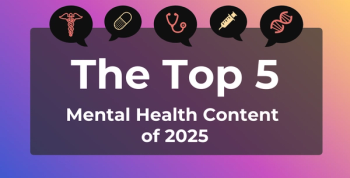
Telehealth Requests for Medication Abortion Double Post Dobbs Ruling
Key Takeaways
- TeleMAB requests nearly doubled post-Roe v Wade reversal, especially in states with abortion restrictions, highlighting increased demand for remote services.
- TeleMAB offers cost, privacy, and travel advantages, crucial for individuals far from abortion clinics, as shown by increased requests in distant counties.
Telehealth medication abortion service requests double after the Supreme Court's Dobbs ruling, as patients seek accessible and cost-beneficial care.
Telehealth medication abortion (teleMAB) service requests, provided by Aid Access, nearly doubled across 18 states after the Supreme Court overturned the Roe v Wade ruling in 2022, according to a research letter published in JAMA Network Open.1
Aid Access is one of many online abortion medication providers that can ship the requested medications to patients, regardless of whether their state carries an abortion ban.2 Since Dobbs v Jackson Women’s Health Organization revoked federal protections for abortions,3 states with partial or complete bans saw more patients seek interstate care, resulting in longer travel times and significant hurdles to access care.
Many patients, however, have turned to telehealth, citing its advantages in lowering costs, maintaining privacy, and eliminating travel.1 Researchers observed a mean monthly teleMAB request rate increase post-Dobbs from 2.5 to 4.5 requests from 100,000 women aged 15 to 44 years.1
“While the surge in teleMAB is well documented, the extent to which distance from a brick-and-mortar abortion clinic relates to this demand in states that permit abortion post-Dobbs remains unclear,” the study authors wrote.
Mifepristone, the first medication administered in a medication abortion, was approved for synchronous dispensing by the FDA in 2021. Clinics were then able to offer a ‘no-test’ telehealth model for medication abortion care. Remote consultations used self-reported medical history to screen for medical eligibility. This expansion became critical after the Dobbs ruling, as a person seeking a medication abortion wouldn’t have to travel interstate to receive care.4
Furthermore, the 18 states that do not have an abortion ban have shield laws to protect medical providers from investigation, subpoenas, warrants, and demands for extradition from another state.5
How Is TeleMAB Demand Related to Distance From In-Person Clinics?
The cross-sectional study examined data from asynchronous Aid Access teleMAB service requests in 18 states where teleMAB was legal 8 months before and after the Dobbs ruling. Distance to the nearest abortion facility by county was determined using population-weighted county centroids from the Myers Abortion Facility Database.
The study used Aid Access teleMAB service requests between November 2021 and February 2023. In that time, Aid Access completed 16,154 teleMAB requests across 18 states and 743 counties. The median age was 26 years, of whom 59.2% (n = 9557) were less than 6 weeks pregnant and 58.8% (n = 9495) had no children.
Before Dobbs, researchers observed 4545 teleMAB service requests and 11,609 post-Dobbs. The mean monthly teleMAB service request, across all counties, increased from 2.4 to 4.5 per 100,000 women aged 15 to 44 years. The mean increased the farther an individual lived from a brick-and-mortar facility and was highest in counties located 100 miles or more from an abortion facility before and after Dobbs.
“These results build upon our findings pre-Dobbs, which also demonstrated increased teleMAB requests among individuals living further from brick-and-mortar facilities,” the study authors wrote.
The study was limited by its reliance solely on data where abortion remained legal, which may have included persons traveling interstate to receive care. However, the findings remain consistent with growing evidence that teleMAB is a vital resource for persons living far from in-person care. Its availability is not only cost-beneficial but also enables access to treatment at early gestation, reducing complications that can occur should care be delayed.1 As restrictions continue to evolve, public health experts stress that maintaining access to safe, evidence-based telehealth abortion services will be critical for protecting reproductive autonomy and ensuring equitable care nationwide.4
“The loss of federal abortion protections has significantly disrupted access even in states with robust service provision,” the study authors concluded. “Our results highlight the critical role of teleMAB in reducing geographic barriers to care and underscore the need to expand teleMAB access nationwide.”
References
1. Willerford AK, Godfrey EM, Myers C, Gomperts R, Thayer EK, Fiastro A. Distance to care and telehealth abortion demand after Dobbs. JAMA Netw Open. 2025;8(10):e2538212. doi:10.1001/jamanetworkopen.2025.38212
2. Aid Access. About Us. Aid Access. July 6, 2025. Accessed October 20, 2025. https://aidaccess.org/en/about-us
3. Inserro A. Supreme Court overturns Roe v Wade, turning issue back to states. AJMC®. June 24, 2022. Accessed October 21, 2025. https://www.ajmc.com/view/supreme-court-overturns-roe-v-wade-turning-issue-back-to-states
4. Upadhyaya UD, Koenig LR, Meckstroth K, Ko J, Valladares ES, Biggs MS. Effectiveness and safety of telehealth medication abortion in the USA. Nat Med. 2024;30:1191-1198. doi:10.1038/s41591-024-02834-w
5. Sager R. What are shield laws and how do they protect telehealth abortion providers? | The Pennsylvania Independent. The Philadelphia Independent. February 6, 2025. Accessed October 20, 2025. https://pennsylvaniaindependent.com/health-care/shield-laws-medication-abortion-states-lawsuits-indictment-margaret-carpenter/
Newsletter
Stay ahead of policy, cost, and value—subscribe to AJMC for expert insights at the intersection of clinical care and health economics.







































